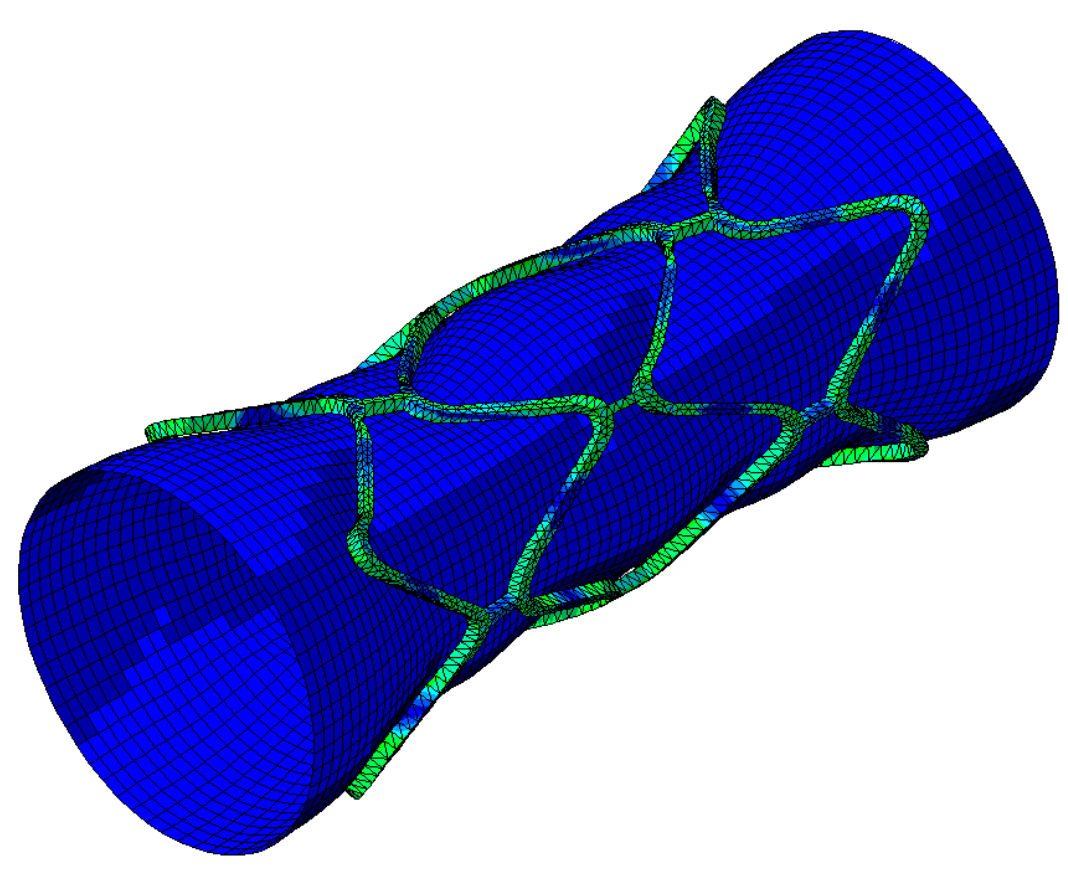Live Life Time Product and Healing Prediction - Smart Stent
1 January 2024

Abstract
Cardiovascular disease remains even today an adversary of healthcare systems and families, claiming millions of lives yearly, presenting both challenges but also opportunities for the medical industry. The poor lifestyle diet choices along with the genetic predispositions for plaque formation force a demand for innovative solutions to counter arterial blockages. In a market driven world, traditional non-degradable metal stents are no longer sufficient. Therefore, continuous research takes place about polymer-based stents offering a biocompatibility and biodegradability or biodegradable metal stents itself, coupled these with drug delivery to tackle plaque formation or neointima evolution. In this work a computational framework will be established focusing on the identification of optimum biodegradable stent design parameters (e.g., number, size, and shape of struts, surface treatments). The mechanical, chemical corrosion and drug release effects will be coupled with the development of a Multiphysics Computational Model. The mechanical effects will be described in Finite Strain Domain to be able to account for phenomena such as Plasticity meaning the expansion of the stent, while the surface corrosion will be modeled with newly introduced theory of Phase Field. A Fatigue analysis shall be conducted considering additionally a drug release, since it is important to identify the balance between healing process and life time of stent structure. The drug release will be simulated with Diffusion-Convection equations based on Fick’s Law. The question now comes, how these achievements can save as many lives as possible, but simultaneously drive the profits in this manner so that further investment in the research is feasible? Long term of this research is the creation of a prototype product, a Smart Stent. This new innovative product will be enhanced with a Deep Learning Model and Electronics. The AI model shall be trained on the generated data from the calibrated material models. This model will be able continuously to evaluate in real time, the life time of the stent structure with data obtained from blood sensors (MEMS) attached on the smart stent. The data will be transferred through wireless technology to a medical device or a smartphone, where on microchips specifically designed for AI models the analysis of the data will be conducted. This way, a patient specific analysis will be able to be conducted since the blood pressure for each patient differs, historical data could be saved for further analysis known as Metadata, therefore allowing the doctors to improve conclusions regarding the treatment of the patient. These are only some of the numerous possibilities of this research direction.
Results & Summary
Here come the Results and Summary
Literature
Here come the Literature